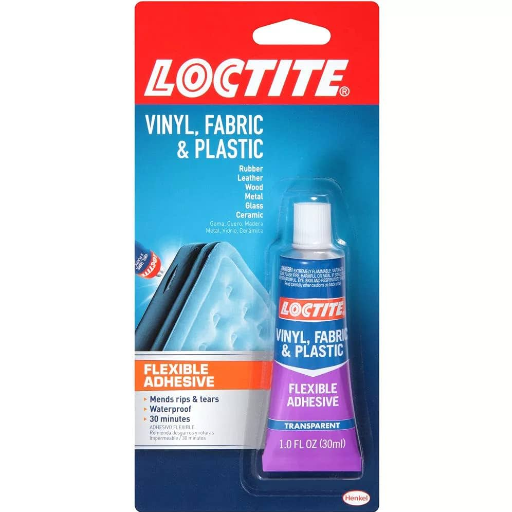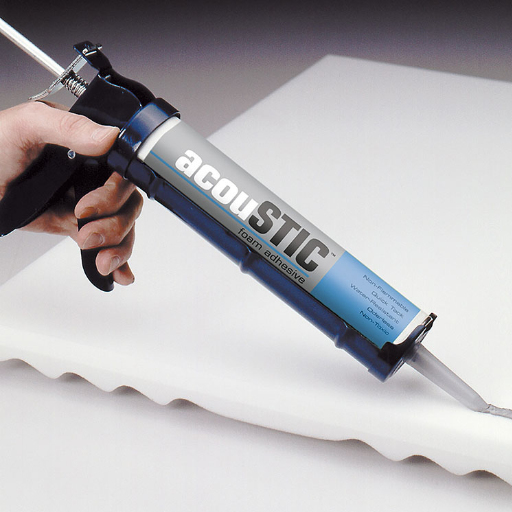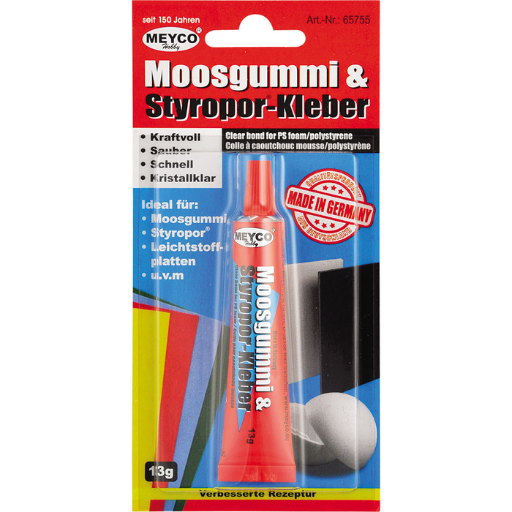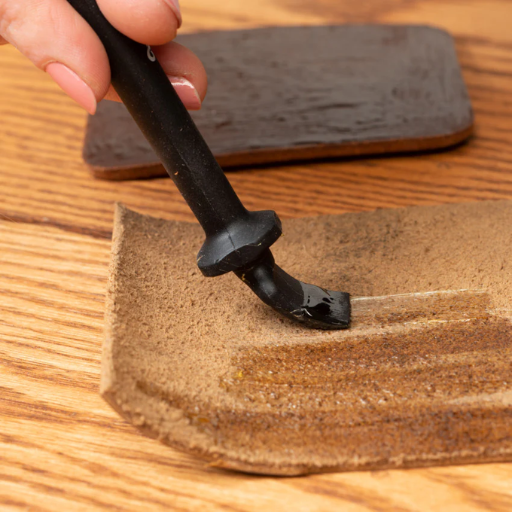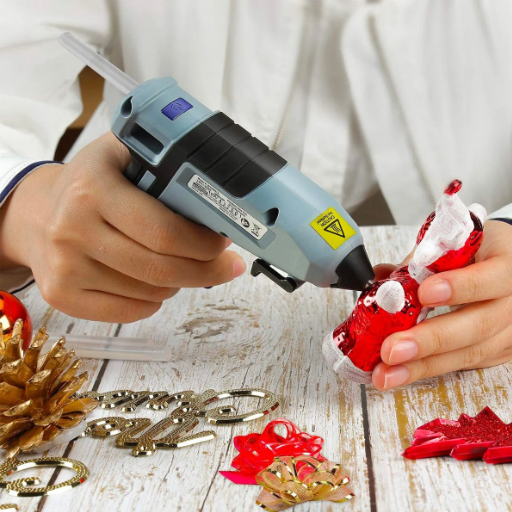Many construction projects as well as DIY tasks depend on establishing a firm and permanent connection between wood and drywall. Achieving that goal, however, is not as simple as applying any standard adhesive product. A systematic approach is always recommended to guarantee precision and ensure that the bond will be enduring. This guide will provide an overview of the tools, methods, and additional considerations that are necessary for accomplishing this task.
We will start by looking at different types as well as features of drywall adhesive, including the targeting of the correct product and why it matters. The guide will also include surface preparation procedures like cleaning and checking the materials for their compatibility. Next, we will explain the particular procedure for applying the substances in a way that will maximize the strength of the wood-drywall bond. After all of that, we will outline the most common mistakes that one should avoid when doing these constructions and provide some hints on how to solve problems that may arise.
Now with this guide, be it a simple carpenter, a downright enthusiast, or an experienced contractor, anyone should be able to acquire the strength, confidence, and concern for detail that gluing wood to drywall demands.
What is the Best Drywall Adhesive for Wood?

While choosing drywall adhesive for wood, ensure that it is specially designed for the adhesion of different materials. The use of Polyurethane adhesive is highly recommended because of its high strength, durability, and moisture resistance. Construction Adhesives, like Liquid Nails or Loctite PL Premium, are the most common picks because they work well with both wood and drywall and are reliable. Make sure the adhesive is marketed as ‘multi-purpose’ or applicable for ‘wood and drywall’ to be most effective. It is also important to consider the environmental factors, and silicone curing time specific to the site of work.
Understanding Different Types of Glue
When analyzing the different types of glue for bonding wood to drywall, it is essential to categorize them based on their chemical composition and application strengths. Below are the most common types of glue tailored for this specific scenario:
- Polyurethane Glue
Highly versatile and known for its strength, polyurethane glue like Gorilla Glue expands as it cures, ensuring a strong, durable bond. It is water-resistant and ideal for environments prone to moisture or temperature fluctuations but requires clamping during curing for best results.
- Construction Adhesive
This type, commonly found in brands such as Loctite PL Premium or Liquid Nails, is designed specifically for heavy-duty applications. It adheres exceptionally well to both porous (wood) and non-porous (drywall) surfaces, with high durability and flexibility. Formulations vary, so select one labeled for wood-drywall applications.
- PVA (Polyvinyl Acetate) Glue
Traditional wood glues such as Titebond fall into this category. While PVA glue is excellent for wood, its bond strength on drywall can be inconsistent without proper preparation. It is best suited for woodworking projects rather than mixed-material applications.
Each glue type has benefits that cater to different project needs, so the choice depends on the specific requirements, such as environmental conditions, curing times, and the strength needed for the bond. Always follow the manufacturer’s guidelines for maximum effectiveness.
How Construction Adhesive Provides a Strong Bond
Construction adhesives are one of the strongest glue types in the market and this is largely because of their unique chemical composition which most times is made up of synthetic polymers like polyurethane and latex. It can bind different surfaces, both porous materials like wood and non-porous materials like plastic, drywall, and metal. The adhesive gets deep into any irregularities present in the surfaces and while curing does hardens to form a very strong and robust bond. Its versatility makes it resistant to structural stresses such as expansion, contraction, and vibration. Most adhesives used in construction are moisture-proof, which increases their usability in different environmental conditions. Properly cleaning and drying the surfaces boosts bond strength. Make sure to follow the manufacturer’s guidelines for best instructions on application and curing times.
Using Titebond vs. Liquid Nails
In the analysis of Titebond and Liquid Nails, a closer look at their applications, bonding capabilities, and curing characteristics would be important to note. Titebond’s primary forte is in high-performance wood glues. This makes it ideal for a range of woodworking tasks, carpentry, and any other work that involves interior finishing where firm bonding to porous surfaces is critical. It features a formulation that allows rapid setting while aging and wear resistance remain exceptional.
On the other hand, Liquid Nails is a multi-purpose construction adhesive that is used to bond a variety of products like wood, metal, concrete, and even ceramic. It is especially good for heavy-duty work where construction features a lot of structural work. Liquid Nails has a high degree of initial tack which helps in enduring environmental conditions like temperature and moisture.
Liquid Nails happens to be the preferred brand for tough bonding applications, especially in harsh working environments. Liquid Nails has a strong initial tack, great for temperature and moisture conditions. For Titebond, its clean finish makes it ideal for intricate woodworking and furniture assembly. In the end, the choice will depend on the specific project requirements and the materials to be bonded. Make sure to read specific product guidelines for best results.
How to Apply Adhesive for the Best Results?

To achieve optimal results when applying adhesive, follow these steps:
- Surface Preparation: Ensure all surfaces to be bonded are clean, dry, and free of oil, grease, or debris. Sand rough surfaces if necessary to improve adhesion.
- Adhesive Selection: Choose the appropriate adhesive type for the materials and environment based on manufacturer recommendations.
- Application: Apply the adhesive in a continuous bead or as per product instructions. For heavy surfaces, use zigzag patterns to enhance coverage and bonding.
- Positioning and Pressure: Align the materials accurately before pressing them together firmly to secure the initial tack. Clamps or weights may be used for additional support where required.
- Curing Time: Allow sufficient curing time as specified in the adhesive guidelines. Avoid stress or movement on the bonded materials during this period.
Properly following these steps ensures a strong, durable bond and maximizes the effectiveness of the adhesive.
Preparation: Dry Before Applying
Before applying the adhesive, surfaces must be dry to achieve optimum bonding. While moisture is present, penetration or adhesion of the adhesive to the surface will be hindered according to results which may lead to weaker bonds or even outright failure. Use clean, lint-free cloths to remove visible moisture, and air dry in a controlled environment for sufficient time. Heat sources like dryers or heat guns can be used for materials that tend to retain moisture, but one must be careful not to overheat or damage the substrate. Additionally, when overcoming a dry surface condition, always confirm it is dry to the touch and free from clamminess. This is crucial if working with porous materials. These measures will increase the reliability and longevity of the bond.
Techniques for Applying Adhesive Correctly
To achieve a precise and effective application of adhesive, follow these detailed steps:
- Uniform Application: Use the appropriate tool—such as a brush, roller, or applicator nozzle—designed for your adhesive type to ensure even distribution. A uniform layer prevents weak spots and reduces the risk of over-application, which could lead to longer curing times or diminished strength.
- Correct Quantity: Always adhere to the manufacturer’s recommendations for adhesive thickness. Applying too much adhesive may cause squeezing or oozing, while insufficient adhesive can result in incomplete bonding.
- Pressure Application: After aligning the surfaces, apply consistent and even pressure to ensure the adhesive spreads evenly and cures properly. Use clamps, weights, or presses for rigid materials, maintaining pressure for the advised amount of time.
- Curing Time Adherence: Allow sufficient curing or drying time as specified by the adhesive manufacturer. Attempting to use or stress the bond prematurely can lead to failure. Environmental factors such as temperature and humidity should also be controlled to maintain optimal curing conditions.
- Avoid Contaminants: During application, ensure that no debris, grease, or dust is introduced between the bonding surfaces. Contaminants compromise the adhesive’s ability to create a strong seal.
Implementing these techniques precisely enhances durability and overall performance, ensuring the adhesive fulfills its intended purpose effectively.
Following Manufacturer’s Instructions
It is paramount to follow the recommendations of the manufacturer to get the best performance and durability of an adhesive. I make it a point to examine and follow the instructions which include how the product is stored, the preparation procedures, and how the product is applied. For instance, I pay attention to and verify if the recommended temperature and humidity levels are set during the application and curing phases, as these will impact the adequacy of the bonds. Moreover, I pay attention to how the curing time given is used and exercise great restraint when applying the adhesive in the suggested amounts. Following these recommendations aids in optimal results and minimizes bond failures.
Can You Glue Wood to Painted Drywall?

Yes, it is possible to glue wood to painted drywall if the appropriate adhesive and preparation techniques are used. First, the painted surface should be cleaned thoroughly to remove any dust, grease, or debris that could interfere with adhesion. Lightly sanding the painted area can also help by providing a rougher surface for the adhesive to grip. Selecting a high-quality construction adhesive or one specifically designed for bonding wood to drywall is critical. Apply the adhesive evenly to the back of the wood, press it firmly onto the drywall, and allow adequate curing time as specified by the manufacturer. Proper preparation and the use of suitable adhesive ensure a strong and durable bond.
Challenges When Gluing Wood to Painted Drywall
Gluing wood to painted drywall presents several challenges, primarily related to surface adhesion and long-term durability. One common issue is that painted surfaces can act as a barrier, preventing adhesives from fully bonding to the underlying material. To mitigate this, proper surface preparation is essential, including cleaning the wall to remove grease, dust, or oils and lightly sanding the paint to create a rougher texture.
Another challenge is the weight of the wood being attached. Heavy pieces may require additional support, such as screws or brackets, as adhesives alone might not provide sufficient load-bearing strength over time. Furthermore, variations in temperature and humidity can affect the adhesive’s performance, potentially leading to eventual separation if the adhesive used isn’t flexible or durable enough to handle environmental changes.
Lastly, improper adhesive selection can result in bond failures. Many general-purpose adhesives are not formulated for securing wood to paint drywall effectively. High-quality construction adhesives or products specifically rated for both materials are necessary, and following the manufacturer’s curing time and application guidelines is critical to ensuring a successful bond.
Ensuring Adhesion on Painted Surfaces
To ensure secure adhesion of wood to painted drywall, follow these key guidelines:
- Surface Preparation
Thoroughly clean the surface to remove dust, grease, and contaminants. Sand the paint lightly to create a rough texture, enhancing the adhesive grip. Avoid skipping this step, as unprepared surfaces significantly reduce bonding effectiveness.
- Adhesive Selection
Use construction adhesives designed specifically for bonding wood to drywall. Check for adhesives rated for both painted and porous substrates and ensure the product accounts for variables such as flexibility and environmental durability. General-purpose adhesives are often insufficient for this purpose.
- Weight Support
For heavier wood pieces, combine adhesive use with mechanical fasteners like screws or brackets. This hybrid approach provides the required structural reinforcement, particularly over time and under load.
- Environmental Considerations
Opt for adhesives engineered to withstand fluctuating temperature and humidity levels. Adhesives with poor resistance to environmental changes have a higher risk of bond failure due to the shrinking or expansion of materials.
- Proper Application
Apply adhesive evenly in beads or lines based on manufacturer recommendations, and ensure proper pressure is applied between the wood and drywall for maximum contact. Allow sufficient curing time as per product guidelines to achieve a strong bond.
By adhering to these steps and selecting appropriate materials, the likelihood of a durable and long-lasting bond between wood and painted drywall can be significantly increased.
Alternative Methods if Adhesive Fails
Should I consider wood to drywall attachment, the wood is painted, and note that adhesive hasn’t successfully achieved that, I’d opt for mechanical fastening first. Screws or nails can be used, as they have straightforward approaches to fastening the item to the wall by going through the wood into the drywall, giving good support. Using wall anchors can strengthen this already-supported arrangement to share weight. Furthermore, for other less visible options, I can investigate readily available frameworks or shelf mounts, which can be adjusted.
What Type of Construction Adhesive is Best for Wet Areas?

It is necessary to use construction adhesives that are meant to be used in wet or moist areas. Polyurethane-based adhesives are the best options due to their effectiveness and bonding strength. In addition, silicone-based adhesives can work well too. They are especially useful for surfaces that come into contact with water like sinks, bathrooms, and kitchens because they seal well. Remember to always confirm that the adhesive is waterproof and appropriate for the materials being bonded. To get the best adhesion which can last through wet conditions, cleaning, and proper surface preparation is very essential.
Choosing Adhesives for Areas with Lots of Moisture
In regions with high humidity, choosing the right adhesive increases the likelihood of having a durable and functional bond. As reviewed in the best-known sources, the identified best adhesives for this purpose are polyurethane and silicone adhesives because of their water-shielding capabilities and a strong everlasting bond. Polyurethane adhesives are exceptional in achieving structural strength and binding with many different surfaces such as porous and non-porous materials. In contrast, silicone adhesives are better in applying waterproofing materials like seals at joints and seams in bathrooms,\ kitchens, and other places with high relative moisture. Also, epoxy adhesives can be used in moisture areas for major heavy-duty bonding, but these adhesives are sensitive to application time and curing. It is advisable to examine the surfaces beforehand and clean them to achieve the best adhesion. Product labels for water-resistant rating and materials compatibility should also be checked and confirmed.
Benefits of Polyurethane Adhesives
Polyurethane adhesives have numerous advantages that make them suitable for different uses. Their bonding strength is exceptional for various metals, plastics, wood as well and ceramics assuring them of their specific use both in industry and at home. They also have high resistance to moisture and other environmental conditions such as UV light and temperature changes making them durable in outdoor and wet environments. They also outperform other adhesives in flexibility, which allows them to relieve stress and movement bounding them. In addition, these adhesives cure at room temperature which makes them very suitable for projects that are time sensitive. Polyurethane adhesives are suitable for complex bonding problems due to their strength, durability, and adaptability.
Are There Specific Techniques for Wood to Drywall Projects?

Adhesion between wood and drywall requires specific and rigorous methods to ensure long-term durability and strength. The first step is extremely important as it involves the selection of an appropriate adhesive like construction polyurethane adhesive which can effectively bond different surfaces. Before application, both surfaces need to be cleaned thoroughly to remove dust, grease, or any other debris that may hinder proper adhesion. Uniformly covering the drywall with adhesive is essential to enhance the dryness retention ability. Heavier pieces of wood can be placed using temporary screws or clamps to maintain the position until the adhesive sets. In addition, adhering to the specified curing times as well as conditions detailed by the manufacturer will enhance the overall success of the project.
Using Furring Strips and Studs
When attaching wood to drywall, using furring strips or studs can significantly enhance the structure’s stability and durability. Furring strips, which are thin wood or metal strips, are mounted to the drywall to create a secure surface for attaching the wood. These strips can mitigate uneven surfaces and distribute the load evenly, reducing strain on the drywall. Studs, on the other hand, form part of the wall’s internal framework and offer a highly reliable anchoring point for heavier wood installations. For best results, securely fasten the wood to the studs using screws or nails, ensuring alignment with stud locations, which can be identified with a stud finder. This approach provides superior load-bearing capacity and minimizes the risk of damage to the wall over time. Both methods are indispensable for achieving a resilient and long-lasting wood-to-drywall bond.
Applying Plywood and Paneling to Drywall
Attaching plywood or paneling to drywall requires a methodical approach to ensure a secure and professional finish. First, measure and cut the plywood or paneling to fit the desired wall area, accounting for outlets or fixtures. Apply construction adhesive to the back of the panel in a zigzag pattern for even coverage, which helps minimize bowing and adds an extra layer of adherence. Place the panel against the drywall and press firmly to ensure proper attachment.
Next, secure the paneling using nails or screws, ideally into the wall studs for maximum support. Use a stud finder before installation to locate the studs and mark their positions for precise fastening. When installing over large surfaces, leave a slight gap between adjacent panels to accommodate natural expansion and contraction due to changes in temperature and humidity.
To finish, seal the edges and seams with caulk or wood filler, then sand any rough spots for a smooth, uniform surface. This step not only improves the aesthetic but also protects the installation from moisture and wear. Proper preparation and meticulous application ensure the longevity and visual appeal of plywood or paneling when installed onto drywall.
Why Silicone Adhesives Might Work for You
Electronic and mechanical applications rely on silicone for its multifunctional and reliable properties. Their thermal stability enables them to maintain working effectiveness from -100°F to 500°F (-73°C to 260°C). This makes them appropriate for extreme cold and hot environments since they are heat or cold-resistant. Along with this, silicone adhesives are highly resistant to moisture, chemicals, UV radiation, and aging which allows them to withstand harsh conditions. Their flexibility lets them bond materials such as glass, metals, plastics, and ceramics without sacrificing structural integrity or performance. Owing to their advanced bonding capabilities, these adhesives are used in automotive, construction, electronics, healthcare, and other industries. Other than general use, silicone adhesives are also available in different formulations, including one-part and two-part options for particular needs such as rapid curing, gap filling, or accurate bonding. From constructed industrial applications to simple DIY tasks, silicone adhesives prove their practicality through high adaptability and resilience.
References
Frequently Asked Questions (FAQ)
Q: What is the best adhesive specifically designed for gluing wood to drywall?
A: The best adhesive specifically designed for gluing wood to drywall is a construction adhesive like Loctite or Gorilla Glue, which is formulated to adhere to both wood and wallboard surfaces effectively.
Q: Can wood glue be used to adhere wood to drywall, and will it be effective?
A: While wood glue can work in some situations, it is not ideal for drywall applications. Using an adhesive specifically designed for drywall and wood surfaces will provide a stronger and more reliable bond.
Q: How do I prepare the drywall surface before applying adhesive to attach wood?
A: To prepare the drywall, ensure the surface is clean, dry, and free of dust or debris. You may also lightly sand with sandpaper to create a better surface for the adhesive to adhere to.
Q: What are the needed tools for attaching wood to drywall using adhesive?
A: The needed tools include a caulking gun for applying the adhesive bead, a metal ruler for measuring, a Stanley knife for trimming, and sandpaper for surface preparation.
Q: How long should I let it dry after applying adhesive before the bond is fully secure?
A: The drying time can vary depending on the adhesive used. Generally, you should let the adhesive cure for at least 24 hours to ensure a strong bond.
Q: Can drywall adhesive be used on porous surfaces like gypsum wallboard?
A: Yes, drywall adhesives are specifically designed to work on porous surfaces like gypsum wallboard, providing a strong bond for your next project.
Q: Are there any surfaces where drywall adhesive will not adhere effectively?
A: Drywall adhesive may struggle to adhere to very smooth, non-porous surfaces like metal or glass without proper surface treatment.
Q: How does the presence of a plaster layer affect the ability to glue wood to drywall?
A: A layer of plaster can impact adhesion if it is not stable or if it hinders the adhesive’s contact with the drywall. Ensure the plaster is secure and clean before applying adhesive.
Q: Is it necessary to use fasteners in addition to adhesive when gluing wood to drywall?
A: Using fasteners can provide additional support, especially for heavy items or in areas where drywall breathes or experiences movement. However, a strong adhesive may suffice for lighter applications.
Q: What are the benefits of using PVA glue for attaching wood to drywall?
A: While PVA glue, or white glue, is generally not recommended for drywall, it can be used for lightweight applications due to its ease of use and accessibility. For best results, use an adhesive specifically designed for drywall and wood.

















